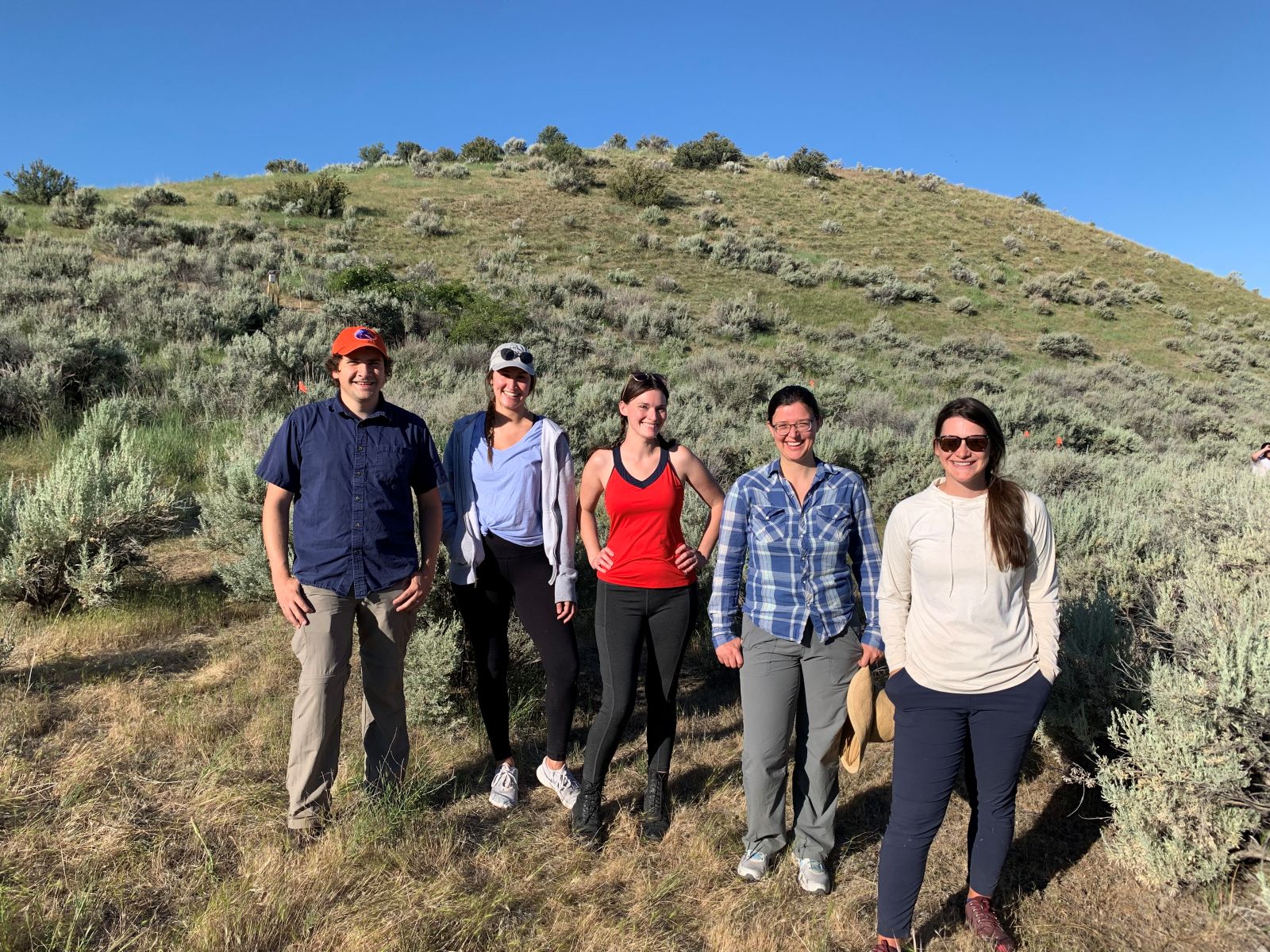
A new article led by Jacob Heil (Ph.D. candidate in Ecology, Evolution and Behavior) and supervised by Leonora Bittleston (Biological Sciences) describes for the first time the fungal microbiome of basin big sagebrush leaves (Artemisia tridentata ssp. tridentata). This article will soon be published in Ecosphere, a journal from the Ecological Society of America.
The study is the result of a year-long sampling effort and reveals how fungal communities change over time with leaf age, weather and plant physiology. This study is a result of a multi-institutional collaboration. In addition to Heil and Bittleston, co-authors include: Boise State undergraduate students Chadwick DeFehr, Rachel Capezza and Aubrey Osorio, along with Allison Simler-Williamson (Biological Sciences).
Other contributors include: masters student Danielle Trawick, Professor Bruce Finney, and Professor Kathryn Turner from Idaho State University and Miranda Striluk from the College of Western Idaho.
The article, “Weather and leaf age separately contribute to temporal shifts in phyllosphere fungal community structure in sagebrush,” explores the fungi living on sagebrush leaves and how they change over time. For this study, the researchers generated 180 DNA samples and 2,000 cultures from sagebrush leaves in the Boise foothills over 26 sampling dates during a full year. They paired this microbiome data with hourly weather data collected by the Boise State geosciences department, as well as chemical and physical data from the sagebrush leaves to determine which factors are driving change in the sagebrush leaf microbiome.
Major findings include that the age of a leaf and air temperature play the strongest role in shaping the leaf microbiome, that some fungal species persist on sagebrush leaves year-round, and that individual fungal species are being affected differently by the changing weather. The leaf microbiome is integral to the health of a plant. This study offers a first glimpse into the microbes living on these native sagebrush plants, which are foundational to the ecosystems of the western United States. Future work will aim to better understand how leaf microbes affect the plant for better or worse, and may be used for conservation or restoration.
This research was funded by a large seed grant from the statewide GEM3 (Genes to Environment: Modeling, Mechanisms, and Mapping) award funded through Idaho NSF EPSCOR program. The authors thank the community of Idaho researchers who made this work possible and offered support, ideas, and encouragement along the way.